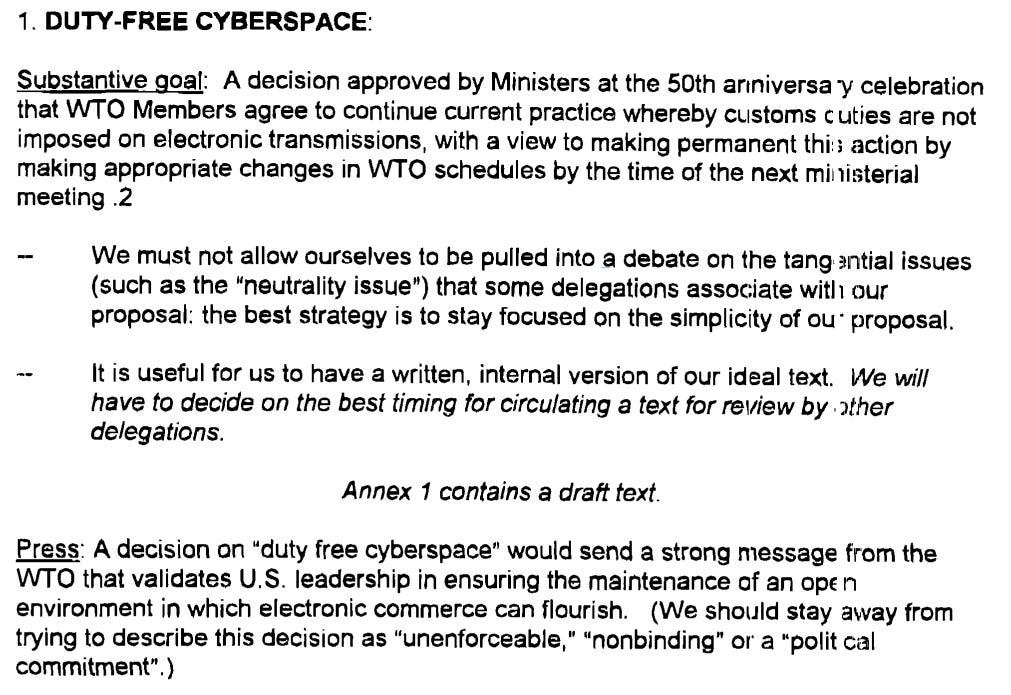WTO: Some US Archive Documents on the Moratorium on Customs Duties on Electronic Transmissions
In honour of the WTO’s 13th Ministerial Conference happening this week - and the attention on what will happen to the moratorium on customs duties on electronic transmissions - this post looks at an interesting record from the Clinton Administration in 1998 when the moratorium was born (which I highlighted last month on Twitter).
The US National Archives hosts a range of interesting presidential records, including from what looks to be Clinton’s speech writing office. This document has around 40-50 pages (with many duplicates) of notes, talking points and background on the US’s Global Electronic Commerce WTO Initiative which led to the moratorium, providing some interesting peeks into the thinking at the time.
So what does it tell us?
First, the US started with a lengthier declaration but USTR Geneva’s discussions indicated this was too complex and (along with the “diverse views of other delegations”) would prevent consensus being reached in time. Consensus among all members was also needed as the EU told USTR that the would not agree to a plurilateral approach as a fallback - which is described as being “decidedly unhelpful”. Instead a shorter text was developed for the Ministerial Declaration.
Second, the EU was a potential concern to the US as it was “insisting on the inclusion of a number of specific electronic commerce issues (such as privacy, authentication and domain names” into the overall declaration. Talking points for calls with the EU had the US hoping for the EU to “be forming the centerpiece of a consensus”.
Third, there was a hope that WTO schedules would be revised to reflect current practice and thereby make the customs duties moratorium permanent. It’s also interesting that some of the briefing says “We should stay away from trying to describe this decision as ‘unenforceable’, ‘nonbinding’, or a ‘political commitment’”.
Ultimately nothing groundbreaking, but to me it is an interesting read. It also sets out the strategy the US developed to build consensus around the decision, including its coalition of supporters, use of the Secretariat, and deliberate targeting of specific events and fora - which was good to read.
So for those with an interest in how international trade policy gets made and implemented or wanting to understand US 1990s digital trade policy - have a read!




